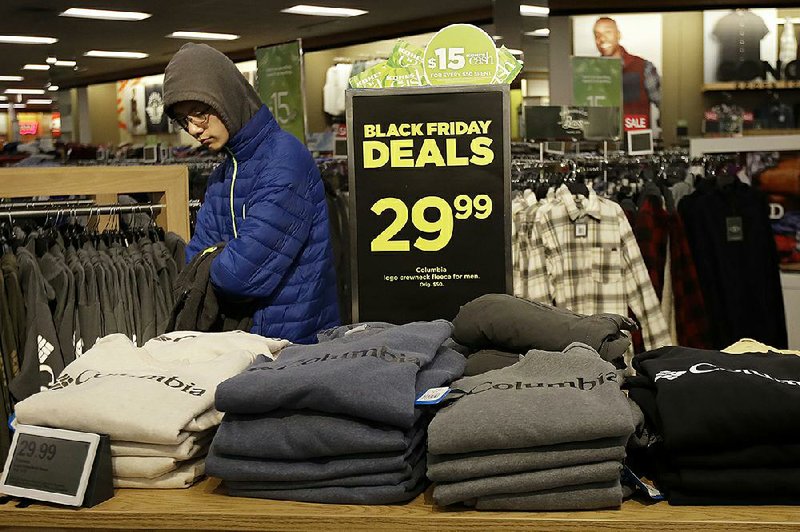WASHINGTON -- U.S. retail sales rose at a modest pace in November as the holiday shopping season appeared to get off to a slow start.
The Commerce Department said Friday that retail sales increased a seasonally adjusted 0.2% in last month, down from 0.4% in the previous month. Healthy car sales lifted the overall figure. Excluding autos, sales ticked up just 0.1%.
Steady job gains, a low unemployment rate and rising wages have lifted consumer confidence and economists expect this year's holiday shopping season to be a healthy one. But with Thanksgiving falling at the very end of November there were fewer shopping days after Black Friday. Parts of the Midwest were also hit last month with snow and cold weather, which may have discouraged some spending.
Still, there were signs of consumer health. October's retail sales were revised higher, to a gain of 0.4%, up from 0.3%. In the past year, retail sales have increased 3.3%, a slightly faster pace than the previous month.
Auto sales rose 0.5% in November, possibly buoyed by lower interest rates on many auto loans. Sales at electronics and appliance stores rose 0.7%, the most since July.
Filling-station receipts increased 0.7%, the report showed. The retail figures aren't adjusted for price changes, so sales could reflect changes in gasoline costs, sales, or both. Separate data on the consumer price index this week showed that gasoline prices rose 1.1% in the month, which could have boosted these figures.
Sales plunged 1.1% at health and personal care stores, the most in nearly a year, and dropped 0.6% at clothing and sporting goods outlets. Restaurants posted a 0.3% drop, also the largest in almost a year.
General merchandise stores, which include large chains such as Target, eked out a 0.1% gain.
A category that mostly includes online sales reported a 0.8% gain as e-commerce continues to gain a greater share of consumers' dollars. Online sales have jumped 11.5% in the past year, nearly quadruple the overall increase in retail sales.
Retail sales are watched closely because they provide the first read of consumer spending each month. Consumers are an even more important driver of the economy than normal, as businesses have cut back on their spending amid the uncertainty of the U.S.-China trade war and weak overseas growth. Exports have also slipped for much of this year.
This week's easing of U.S.-China trade tensions should aid the economy in 2020.
The U.S. and China have agreed to an initial phase of a trade deal with China, averting the threat this Sunday of a new wave of U.S. tariffs on about $160 billion of consumer goods from the Asian nation.
Bank of America Global Research reporting retailers had the highest sales gains for the period up to Black Friday since 2013.
A Bloomberg survey this month showed growth in consumer spending was expected to ease to a 2.1% pace in the fourth quarter, from 2.9% in the prior three months.
Even so, the weakness in consumer spending -- which accounts for two-thirds of the economy -- is likely not dire enough to spur the Federal Reserve to resume cutting interest rates at its January meeting.
Fed Chairman Jerome Powell noted in a press conference this week that consumer confidence remains elevated and that spending is healthy, with policy makers expecting to hold interest rates steady through the end of 2020. Last week's jobs report for November showed payroll gains topped all economist estimates.
The sales data don't capture all household purchases and tend to be volatile from month to month. Personal-spending figures will offer a fuller picture of U.S. consumption in data due Dec. 20.
A separate Labor Department report Friday added to signs of muted inflation pressures in the economy. The U.S. import price index rose 0.2% in November from the prior month, matching forecasts, and fell 1.3% from a year earlier. Excluding petroleum, the index was also up 0.2% from the prior month.
Information for this article was contributed by Christopher Rugaber of The Associated Press; and by Katia Dmitrieva, Kristy Scheuble and Sarina Yoo of Bloomberg News.
Business on 12/14/2019
